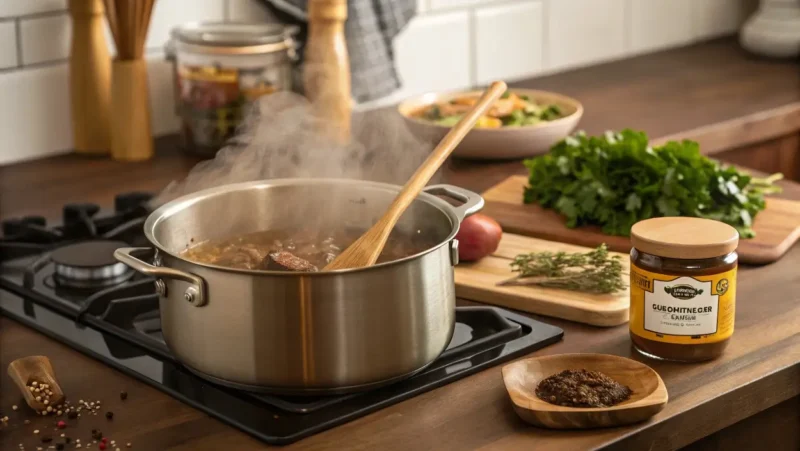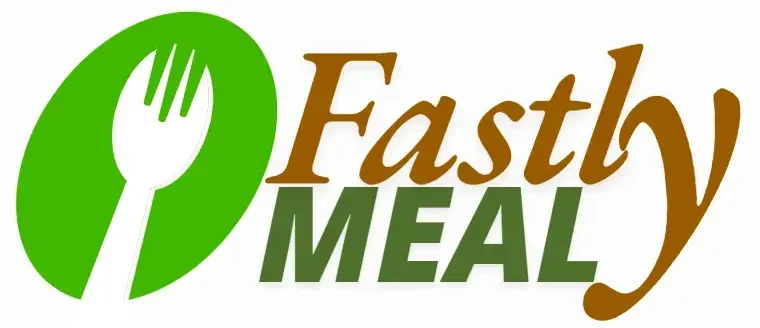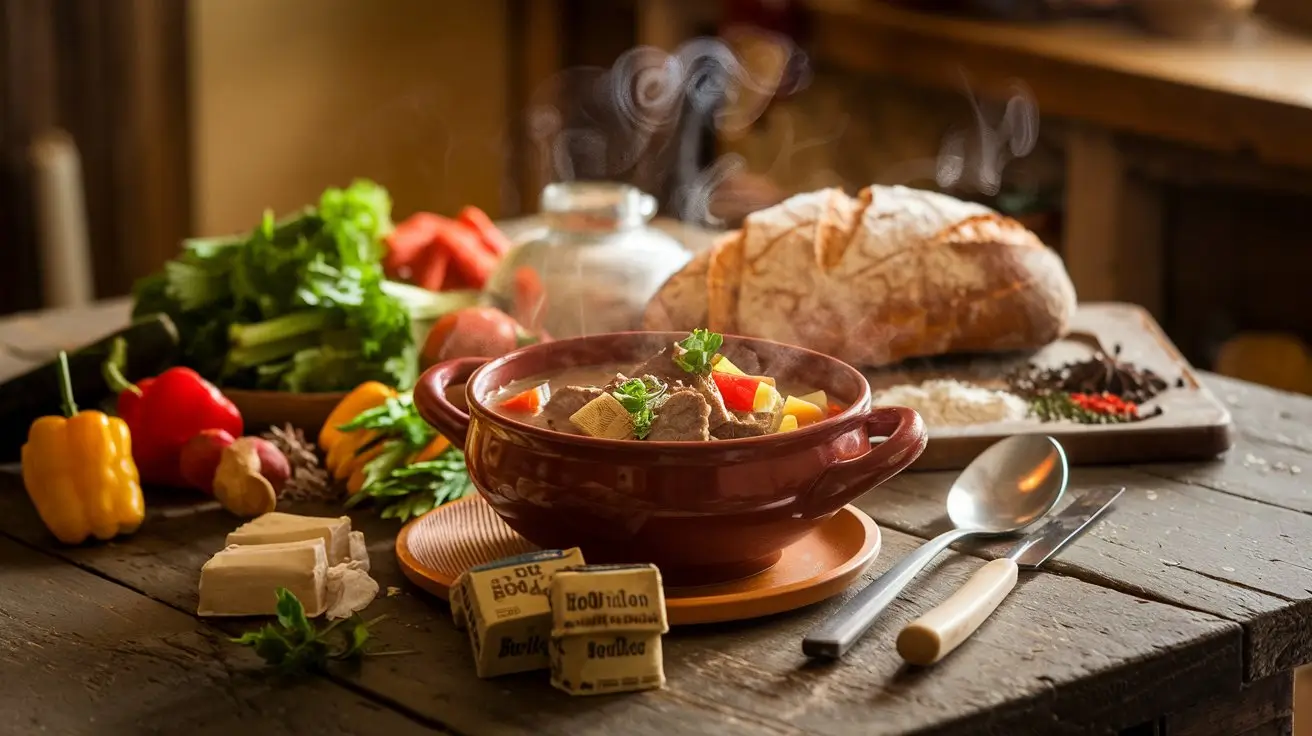Let’s dive right in. If you’ve ever simmered a pot of soup or whipped up a hearty stew, chances are beef bouillon was the secret ingredient that made it taste like magic. So, what exactly is beef bouillon? At its core, it’s a concentrated form of beef stock. Think of it as the supercharged version of the broth we all know and love.
Available in cubes, powders, pastes, or even liquid form, beef bouillon is designed to add a burst of savory, meaty goodness to your dishes. It’s often pre-seasoned with herbs, spices, and salt, making it a one-stop flavor powerhouse. Whether you’re a kitchen newbie or a seasoned chef, it’s a must-have in the pantry.
Here’s why it’s so popular: it saves time. Traditional beef stock can take hours to prepare. Bouillon? Just dissolve it in water, and voilà!
Table of Contents
The History of Beef Bouillon
Ever wondered where this culinary gem originated? The roots of bouillon can be traced back to 17th-century France. The word “bouillon” itself means “broth” in French, and the concept was born from the age-old tradition of boiling meat and bones to create a flavorful base for meals.
Fast forward a couple of centuries, and the bouillon cube revolutionized kitchens worldwide. First introduced in the early 1900s by brands like Maggi and Knorr, these tiny cubes packed a punch, making it easier than ever to add depth to dishes.
Did you know? Bouillon cubes were even part of wartime rations due to their portability and high flavor content. Now, they’re a staple in households everywhere, helping cooks create everything from soups to marinades.
“Cooking is an art, and beef bouillon is the painter’s palette, it lets you mix and match flavors effortlessly.”
Why Use it in Cooking?
Let’s be honest. Cooking can feel like a juggling act, balancing flavors, textures, and techniques all at once. Enter beef bouillon, the ultimate multitasker.
Here’s why you need it:
- Flavor Enhancer: Amplifies the taste of dishes like meatloaf recipes.
- Versatility: Perfect for soups, casseroles, and even gourmet dishes like Prime Rib Seasoning.
- Convenience: Forget hours of simmering bones. Bouillon gives you that same rich flavor in minutes.
- Budget-Friendly: Compared to fresh stock, it’s cost-effective and has a longer shelf life.
Plus, it’s like having a flavor cheat code in your pocket. Imagine adding a teaspoon of bouillon to a bland soup and watching it turn into a gourmet masterpiece. That’s the magic!
Types of Beef Bouillon

Did you know there’s more than one type of beef bouillon? Choosing the right form can make all the difference. Let’s break it down:
- Cubes: These are the OGs of bouillon. Handy, compact, and easy to store, they dissolve quickly in hot water.
- Powder: Think of this as bouillon’s versatile cousin. It’s easy to measure and sprinkle into recipes.
- Paste: Want more intensity? Paste bouillon packs a punch. It’s rich, concentrated, and ideal for gourmet dishes.
- Liquid: The most convenient form, no dissolving required. Perfect for soups or when you’re short on time.
Each type has its pros and cons, so experiment to find your favorite. For me, cubes are a go-to when I’m cooking on the fly, while paste works wonders for slow-cooked stews.
Nutritional Value
Let’s talk nutrition. While beef bouillon is a flavor superhero, it’s not without its quirks. A single serving typically contains:
- Calories: Low, often under 20 calories per serving.
- Protein: Minimal but present.
- Sodium: The one thing to watch out for, it’s often high, so moderation is key.
If you’re keeping an eye on your salt intake, look for low-sodium or unsalted varieties. They offer the same great taste without overloading your diet.
Fun Fact: Some bouillon products are fortified with vitamins and minerals, making them a sneaky way to boost your nutritional intake.
Quick Tip for the Health-Conscious
If you’re worried about additives, homemade beef bouillon is your best bet. It’s free of preservatives, and you can control every ingredient. A win-win!
How to Make Homemade Beef Bouillon
Are you ready to roll up your sleeves? Making your own beef bouillon is surprisingly simple.
Here’s what you’ll need:
- Ingredients: Beef bones, vegetables (carrots, celery, onions), garlic, bay leaves, and seasoning.
- Method: Roast the bones for extra flavor, then simmer them with the veggies and seasonings for 4–6 hours. Strain the mixture, and there you have it, homemade bouillon!
Pro Tip: Freeze it in ice cube trays for convenient portions. Trust me, your future self will thank you.
Did You Know? Homemade bouillon is not just a recipe, it’s a tradition in many cultures, symbolizing comfort and nourishment.

Popular Brands
When it comes to beef bouillon, not all brands are created equal. Some have a richer flavor, while others cater to specific dietary needs. Here are a few trusted names that have stood the test of time:
- Knorr: A household favorite, Knorr offers cubes, powders, and liquid forms. Their flavors are bold, making them ideal for hearty dishes.
- Maggi: Known for its iconic yellow-and-red packaging, Maggi delivers a classic beefy taste with an umami punch.
- Better Than Bouillon: This premium option is a paste, delivering deep, concentrated flavor. It’s a great choice for gourmet cooks.
- Herb-Ox: Offering low-sodium and gluten-free options, Herb-Ox caters to the health-conscious.
- Wyler’s: A classic American brand, Wyler’s has a loyal following for its authentic taste and budget-friendly pricing.
If you’re new to beef bouillon, start with one of these brands to see which fits your taste preferences and cooking style.
Beef Bouillon vs. Beef Stock: What’s the Difference?
It’s easy to confuse beef bouillon with beef stock, they both sound similar and serve a similar purpose. But there are some key differences:
| Aspect | Beef Bouillon | Beef Stock |
|---|---|---|
| Consistency | Concentrated (cube, powder, paste, or liquid) | Liquid, made from simmered bones and veggies |
| Flavor | Intensely savory | Mild and natural |
| Preparation | Ready to use, just add water | Takes hours to make |
| Shelf Life | Long, even at room temperature | Short, requires refrigeration or freezing |
Bouillon is the quick-and-easy option when you need instant flavor, while stock is best for recipes where freshness takes center stage.
Common Uses of Beef Bouillon in Recipes
Let’s talk about versatility. Beef bouillon isn’t just for soup, it’s a multitasker that can elevate a wide range of dishes:
- 1. Soups and Stews
- Beef bouillon makes an excellent base for hearty soups like Caldo de Pollo or stews. Dissolve it in water, and you’re ready to go.
- 2. Sauces and Gravies
- Add depth to sauces and gravies by incorporating bouillon into your recipes. Pair it with recipes like Garlic Parmesan Chicken Pasta for a rich and creamy sauce.
- 3. Marinades
- Bouillon enhances marinades for meats, giving them a savory edge. Try it with Smoked Chicken Thighs for an elevated BBQ flavor.
- 4. Rice and Grains
- Cooking rice, quinoa, or couscous? Replace water with bouillon-infused liquid for an extra flavor boost.
- 5. Casseroles
- Enhance the flavor of dishes like shepherd’s pie or explore creative options with Smoked Mac and Cheese.

Creative Ideas You’ll Love
Looking to think outside the box? Here are some fun, unexpected ways to use beef bouillon:
- Popcorn Seasoning: Sprinkle powdered bouillon on popcorn for a savory snack.
- Mashed Potatoes: Stir in a little liquid bouillon instead of butter for a bold, meaty flavor.
- Cocktails: Believe it or not, some mixologists use bouillon to craft savory drinks like Bloody Marys!
“Beef bouillon isn’t just an ingredient, it’s an experience. Use it to transform everyday dishes into something extraordinary.”
Beef Bouillon Substitutes
Out of bouillon? Don’t panic, there are plenty of substitutes that can save the day:
- Beef Stock or Broth: The closest alternative, offering similar flavor without the concentrated intensity.
- Soy Sauce: A splash of soy sauce can mimic the umami profile of bouillon in a pinch.
- Worcestershire Sauce: Perfect for stews and gravies, thanks to its robust, beefy undertones.
- Miso Paste: While it’s not beef-based, miso paste offers a deep umami flavor that pairs well in soups and marinades.
- Chicken Bouillon: A versatile substitute with a lighter flavor. Learn more in the Chicken Bouillon guide.
- Vegetable Bouillon: For vegetarians, this is a great way to replicate the flavor without the meat.
Pro Tip: If you’re substituting, remember to adjust salt levels, many alternatives are naturally salty.
Health Considerations with Beef Bouillon
While beef bouillon is a culinary star, it’s not without its quirks. Here are some factors to keep in mind:
- Sodium Levels: Bouillon is often high in salt, which can be a concern for those managing blood pressure or sodium-sensitive diets. Opt for low-sodium versions if needed.
- Additives: Some store-bought bouillons contain artificial flavors or preservatives. Always check the label if you’re health-conscious.
- Allergens: Gluten and MSG are sometimes present in certain brands, so it’s important to double-check if you have dietary restrictions.
That said, bouillon can be part of a balanced diet when used in moderation. Think of it as a flavor enhancer, not the main event.
Gluten-Free and Vegan Options for Beef Bouillon
Good news, there are gluten-free and plant-based alternatives that don’t skimp on flavor.
- Gluten-Free Bouillon: Many brands like Herb-Ox and Better Than Bouillon offer gluten-free options. Always look for a certified label to be sure.
- Vegan Beef Bouillon: Products like Edward & Sons and Frontier Co-Op have mastered plant-based bouillons that mimic beef’s richness using ingredients like yeast extract and mushrooms.
Whether you’re gluten-sensitive or following a vegan diet, there’s a bouillon out there for you.
Why You Should Try Making Homemade Substitutes
If you have time, homemade alternatives are unbeatable. Try simmering mushrooms, soy sauce, and garlic for a quick vegan bouillon base, it’s rich, savory, and totally customizable.
How to Store Beef Bouillon Properly
Got leftovers or an open jar? Here’s how to keep your bouillon fresh:
- Cubes and Powder: Store in a cool, dry place. They can last up to a year unopened.
- Paste: Refrigerate after opening and use within a few months.
- Liquid: Keep refrigerated and consume within a week. For longer storage, freeze in ice cube trays.
Pro Tip: Label your containers with dates to avoid guessing how long they’ve been in the fridge.
Fun Fact: Frozen bouillon cubes are lifesavers on busy nights, just pop one into a pan for instant flavor!
Best Recipes Using Beef Bouillon
Beef bouillon is like the MVP of the kitchen, effortlessly elevating both simple and complex recipes. Let’s look at some crowd-pleasing dishes you can whip up:
- Classic French Onion Soup: Beef bouillon gives this dish its deep, savory base. Combine caramelized onions, beef bouillon, and a splash of wine for a soup that tastes straight out of Paris.
- Beef Stroganoff: Add dissolved bouillon to your creamy sauce for an extra layer of beefy goodness.
- Shepherd’s Pie: Mix bouillon into the ground beef filling for a richer, heartier flavor.
- Homemade Ramen: For a quick, comforting bowl, use beef bouillon as the base broth, and top with noodles, eggs, and veggies.
- Gravy: Bouillon is a game-changer when making gravy from scratch. Just dissolve it in the pan drippings and whisk in some flour for a luscious finish.
Quick Recipe: Beef Bouillon Rice
Looking for an easy side dish? Try this flavorful rice recipe:
Ingredients:
- 1 cup of rice
- 2 cups of water
- 1 teaspoon of beef bouillon (paste or powder)
- 1 tablespoon of butter
- Chopped parsley (optional)
Instructions:
- Bring water to a boil and stir in the bouillon until dissolved.
- Add the rice, reduce the heat, and cover.
- Cook until the rice absorbs the liquid (about 15 minutes).
- Stir in butter and garnish with parsley.
This dish pairs beautifully with grilled meats or roasted vegetables.
Common Mistakes When Using Beef Bouillon
Even the best cooks can make mistakes, and beef bouillon is no exception. Here’s what to avoid:
- Using Too Much: Bouillon is concentrated, so a little goes a long way. Overdoing it can make your dish too salty or overpowering.
- Skipping Dilution: Always dissolve bouillon in water before adding it to a dish unless a recipe specifically calls for undiluted paste or powder.
- Adding It Too Late: For soups and stews, add bouillon early so it has time to meld with other ingredients.
- Neglecting to Taste: Since bouillon contains salt, it’s crucial to taste your dish before adding additional seasoning.
“Cooking is about balance, and beef bouillon is like salt, it’s better to start with less and add more if needed.”
Can You Use Beef Bouillon in Cold Dishes?
Surprisingly, yes! While bouillon is typically associated with hot dishes, it can also shine in cold recipes. Here’s how:
- Salad Dressings: Dissolve bouillon in a bit of hot water, then whisk it into vinaigrettes for an umami boost.
- Cold Pasta Salads: Add a touch of bouillon to the dressing for depth of flavor.
- Meat Spreads: Mix bouillon with softened butter or cream cheese to create a savory topping for crackers or bread.
Enhancing Flavor with Beef Bouillon
Beef bouillon is like a magic wand for flavor. Here are some creative tips for taking your dishes to the next level:
- Combine with Fresh Herbs: Add dissolved bouillon to recipes, then finish with fresh parsley or thyme for a burst of freshness.
- Layer the Flavor: Use bouillon as a base, but also incorporate other flavor boosters like garlic, onions, or wine.
- Deglaze Pans: After searing meat, pour in bouillon to lift the flavorful bits stuck to the pan, it’s a quick way to make a sauce.
- Use as a Basting Liquid: Mix bouillon with butter and brush it over roasts for a golden, flavorful finish.
Frequently Asked Questions
What is the best water-to-bouillon ratio?
Typically, one bouillon cube or teaspoon of paste is dissolved in 1 cup of hot water. However, you can adjust this ratio based on how concentrated you want the flavor.
Can you freeze beef bouillon?
Absolutely! Paste or homemade bouillon can be portioned into ice cube trays and frozen. Cubes and powders don’t need freezing but should be stored in a cool, dry place.
Is beef bouillon gluten-free?
Many brands offer gluten-free options, but always check the label to be sure. Better Than Bouillon and Herb-Ox are known for gluten-free varieties.
How long does homemade bouillon last?
Refrigerated homemade bouillon typically lasts up to a week. For longer storage, freeze it in airtight containers.
Can vegetarians use beef bouillon?
Traditional beef bouillon is not vegetarian, but there are plant-based alternatives that mimic its flavor. Look for vegan-friendly bouillons made with mushrooms and yeast extracts.
Does beef bouillon contain MSG?
Some brands include MSG as a flavor enhancer, while others are MSG-free. If you’re sensitive, look for products labeled “No MSG.”
Mastering Beef Bouillon in the Kitchen
Beef bouillon isn’t just an ingredient; it’s a secret weapon. Whether you’re crafting a cozy soup, a robust stew, or even a creative appetizer, it’s there to add depth and richness. By understanding its types, uses, and potential pitfalls, you can unlock a world of culinary possibilities. By using bouillon effectively and pairing it with complementary recipes like Smoked Meatloaf, you can transform your everyday cooking into extraordinary culinary experiences.
So, grab that bouillon cube or whip up a homemade batch and let your taste buds thank you. Happy cooking!

